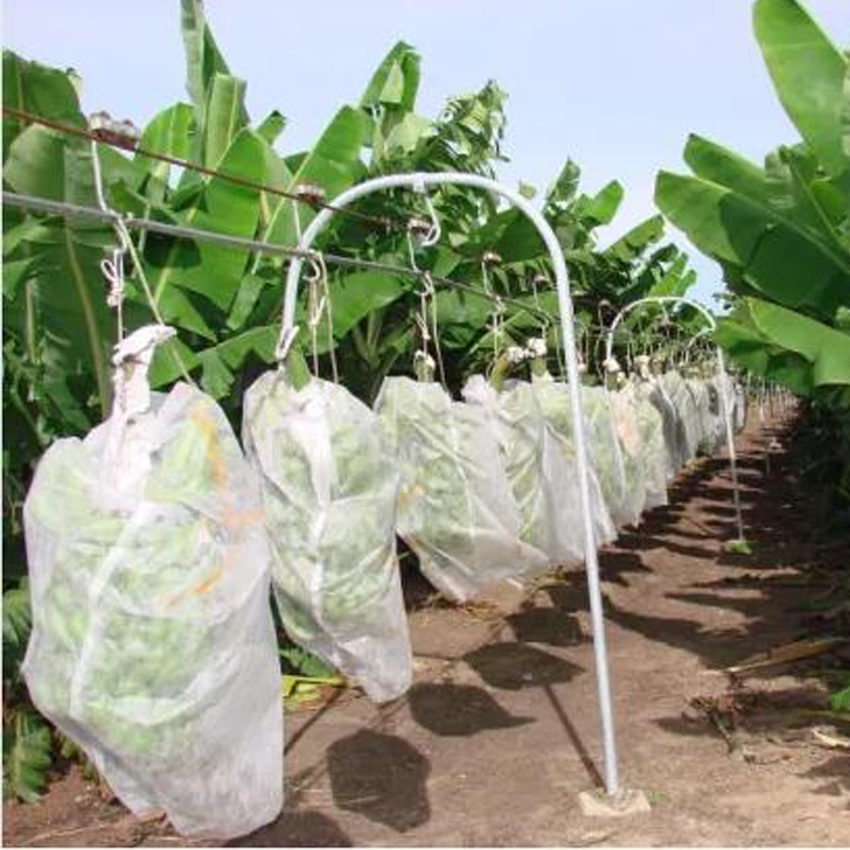
Non-woven Industrial Development. Non-woven fabric was invented in the petrochemical industry following the invention of plastic cloth (film). Compared with plastic cloth, it is more light-weight and provides good air circulation. It is often used in sanitary and medical products like facial towels, sanitary napkins, filters, etc. Later it was developed and then applied to engineering. Non-woven fabrics are utilized to protect vegetables from damage caused by cold. While non-woven fabrics use a different production process than plastic films, the raw materials are very similar. It includes polyvinyl chloride (PVC) and PE (polyethylene), EVA copolymer (Ethylene Vinyl Acetate), PVA/polyvinyl Alcohol, and more. Through melting plastic and inflating the resultant thin film conventional plastic films can be produced. It is a continuous film. It can stretch indefinitely. The film has no pores. It is totally inert, and it blocks all movement and exchange of molecules. Artificial chemical fibers, made from the mentioned raw materials, became the hottest product in the textile industry. But , in essence these fibers are still formed into cloth by traditional warp and weft weaving. The non-woven fabric is created by interconnecting fibers within the same plane, at various angles across all directions. It's impossible to utilize traditional weaving and warp methods. It is a superior material over traditional weaves. The process of production can be complete from raw materials to finished products in a single step. This eliminates the drawing process and results in lower production costs. In recent years, non-woven fabrics were extensively used in the clothing sector. Because of advances in the field of materials research and the development of production technologies non-woven fabrics have become more diverse and is being utilized more extensively. There are a variety of materials and products used in daily life. Non-woven fabrics are becoming more popular in agriculture due to their easy production, lightweight, flexibility, low cost, and numerous applications. Check out this non woven landscape fabric for more info.

Non-Woven Fabrics in the Agricultural Industry. Non-woven fabrics first appeared in Europe in 1978. They were used to keep carrots warm in the early stages of harvesting, and to prevent whiteflies as well as tomato leaf viruses. In the United States non-woven fabrics are employed to mulch sweet peppers, cantaloupes tomatoes and root vegetables, as well as carrots as well as radishes, cabbages, lettuce, and various other vegetables. They are used to preserve heat and for early harvesting. Because non-wovens can help to increase soil temperature and also have a high water retention and water retention, they are often used as surfaces like grass-proof mats. The creation of water-absorbing blankets from short fiber can be applied to nursery bedding to ensure the roots are able absorb all water. They can also be used as the ground medium for turf production. They can also be used as planting bags to guard large trees, such as gardens or fruit trees, and also to retain water. Non-woven fabrics, which aren't weaved, are commonly used in Taiwan to protect the crops. These are used extensively to manage greenhouses' climate and also to save energy. Double-layered canopy curtains and cover reduce heat radiation and solar radiation in the evening. To shade and protect cauliflower bulbs, high-density nonwoven spun-bonded TAVIK fabrics were employed. Its high shading capacity, low thermal conductivity and ease of recyclability made it a popular option for farmers. Later, it was gradually applied to the heat preservation and pest-proofing of leaf vegetables as well as to the preservation of heat and shade and cultivation of fruit trees and pineapples. Because of the unique climate and ecosystem of Taiwan and climate, the growth of the industry of nonwovens has been slow. The nonwoven fabric producers in Taiwan keep innovating nonwoven technology. This is a case of air permeability, water absorption as well as water repellency. For its use in the preservation and storage of agricultural products it has intensified its research and hopes to broaden the scope of uses. Follow this agriculture non woven fabric manufacturer for advice.
